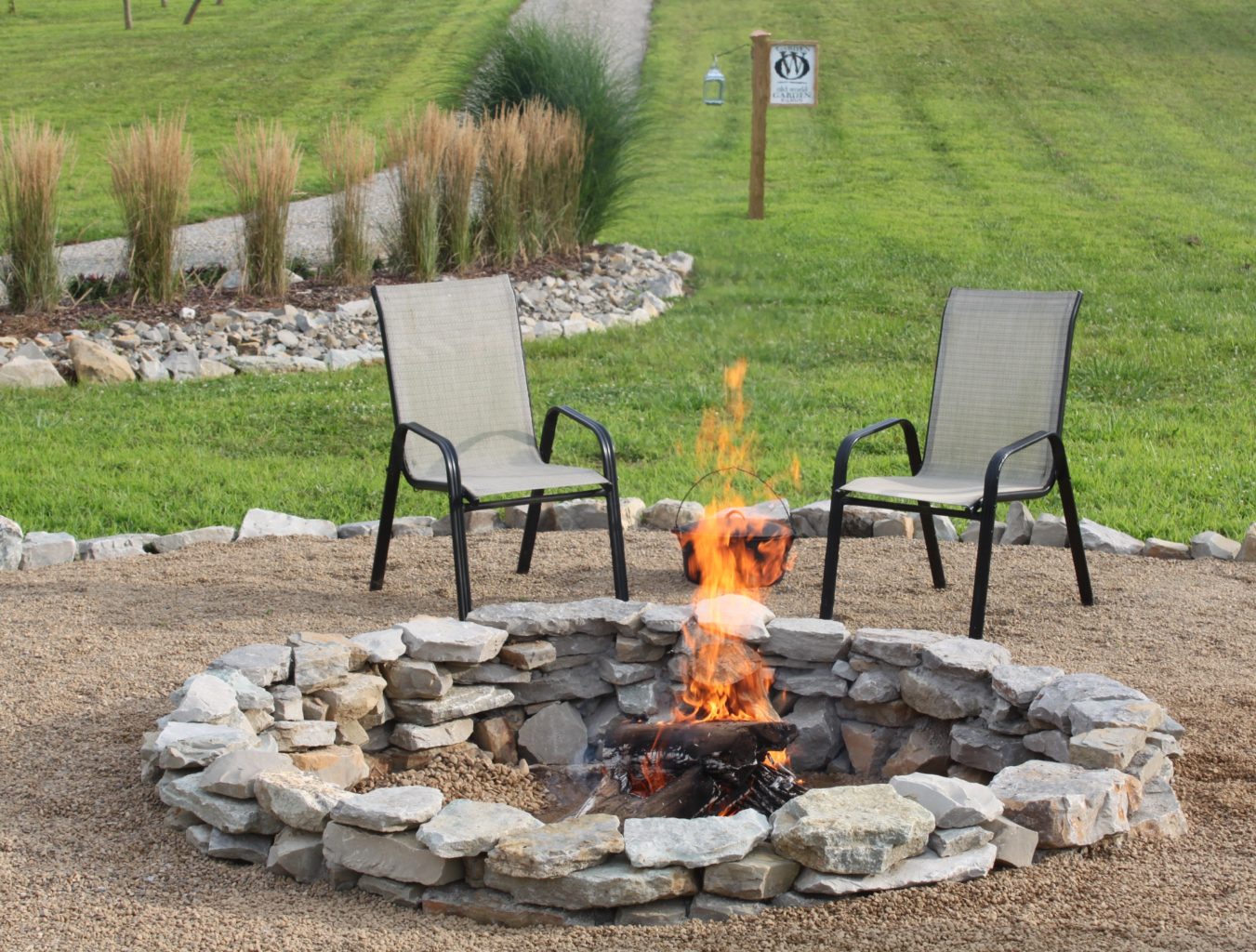How to make a stone fire pit – Embark on a journey of fireside enchantment as we delve into the art of crafting a stone fire pit. This definitive guide unveils the secrets to building a backyard oasis where warmth, ambiance, and memories intertwine.
From selecting the perfect stones to ensuring safety and functionality, this comprehensive guide empowers you to create a stunning focal point that will transform your outdoor space into a sanctuary for relaxation and celebration.
Choosing the Right Stones

Selecting the appropriate stones for your fire pit is crucial to ensure durability, heat resistance, and aesthetics. Consider the following factors when choosing stones:
Types of Stones
- Sandstone:Durable and heat-resistant, but may crack over time.
- Limestone:Heat-resistant but can be porous and absorb moisture.
- Granite:Highly durable and heat-resistant, but expensive.
- Lava Rock:Lightweight and heat-resistant, but can be sharp.
Size and Quantity
Determine the size of your fire pit and the number of stones required. Generally, larger stones are used for the base, while smaller stones are used for the sides and top.
Preparation
Before using stones, clean them thoroughly to remove dirt, debris, and loose particles. This will help prevent the spread of fire and ensure the stones last longer.
Selecting the Location and Digging the Pit

Selecting the location for your fire pit is crucial for safety and functionality. Choose an open area away from structures, overhanging branches, and flammable materials. Ensure a minimum distance of 10 feet from any building or combustible objects.
Digging the Pit
Dig a circular or rectangular pit to the desired size and depth. The depth should be around 12-18 inches, while the width can vary depending on the size of your fire. Use a shovel to remove the sod and soil, creating a level base for the fire pit.
Installing a Fire Ring or Lining
To improve drainage and heat retention, consider installing a fire ring or lining the pit with sand or gravel. A fire ring provides a stable base for the stones and prevents them from shifting. Sand or gravel helps drain excess water and reflects heat back into the fire.
Building the Fire Pit: How To Make A Stone Fire Pit

The construction of the fire pit involves carefully stacking the stones around the perimeter of the pit, ensuring stability and aesthetics. Creating a raised firebox within the pit is crucial for improving airflow and enhancing combustion. Additionally, the use of mortar or adhesive to secure the stones must be considered, with each method offering its own advantages and drawbacks.
Stacking the Stones
When stacking the stones, begin by placing the largest and most stable stones at the base. Gradually work your way up, using smaller stones to fill in the gaps and create a stable structure. Interlock the stones as much as possible to enhance stability and prevent shifting.
Consider the overall shape and design of the fire pit, incorporating curves or angles to add visual interest.
Creating a Raised Firebox
To improve airflow and combustion, create a raised firebox within the pit. This can be achieved by building a small platform or ring of stones elevated from the bottom of the pit. The raised firebox allows oxygen to circulate more efficiently, resulting in a hotter and more efficient fire.
Using Mortar or Adhesive, How to make a stone fire pit
The use of mortar or adhesive to secure the stones is optional but can provide additional stability and durability. Mortar, a mixture of cement, sand, and water, creates a strong bond between the stones and can withstand high temperatures. However, it can be challenging to work with and requires time to cure.
Alternatively, heat-resistant adhesive can be used, which is easier to apply but may not be as durable as mortar.
Finishing Touches and Safety Considerations
To complete your stone fire pit, additional touches enhance its functionality and ensure safety. Embracing these considerations ensures a well-crafted and secure outdoor feature.
Protective Barrier
Encircling the fire pit with a protective barrier is crucial. This prevents embers from escaping, safeguarding the surrounding area from potential fire hazards. Stones or bricks serve as excellent materials for constructing this barrier, providing a durable and effective boundary.
Grate or Cooking Surface
Consider installing a grate or cooking surface within the fire pit for added versatility. When selecting a grate, factors like size, durability, and heat resistance are essential. Choose a grate that aligns with the dimensions of your fire pit and can withstand the intense heat generated by the flames.
Safety Precautions
Prioritizing safety is paramount when operating a fire pit. Ensure adequate ventilation to prevent smoke accumulation. Keep a fire extinguisher nearby for emergencies. Avoid using flammable liquids to ignite the fire, as they pose significant risks.
End of Discussion

As the embers of your stone fire pit dwindle, let the memories forged around its glow illuminate your heart. Embrace the warmth, the stories shared, and the laughter that has filled this backyard haven. May your stone fire pit forever be a symbol of cherished moments and the enduring bonds that unite us.
